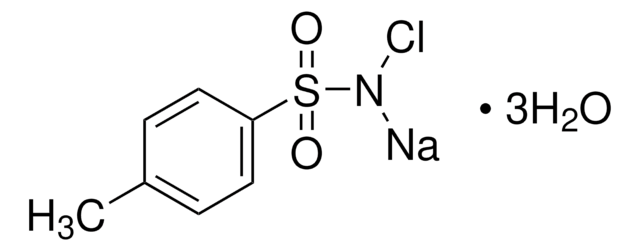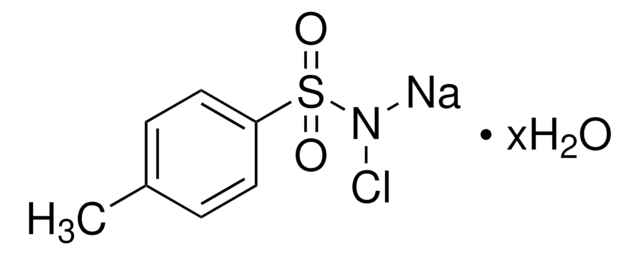D2004
4-(Dimethylamino)benzaldehyde
suitable for histochemical demonstration of nitro blue tetrazolium reduction in neutrophils
Synonym(s):
p-Dimethylaminobenzaldehyde, DMAB, Ehrlich’s reagent
About This Item
Recommended Products
Assay
≥99% (TLC)
form
powder
mp
72-75 °C (lit.)
solubility
ethanol: 50 mg/mL
suitability
suitable for histochemical demonstration of nitro blue tetrazolium reduction in neutrophils
application(s)
diagnostic assay manufacturing
hematology
histology
storage temp.
room temp
SMILES string
CN(C)c1ccc(C=O)cc1
InChI
1S/C9H11NO/c1-10(2)9-5-3-8(7-11)4-6-9/h3-7H,1-2H3
InChI key
BGNGWHSBYQYVRX-UHFFFAOYSA-N
Looking for similar products? Visit Product Comparison Guide
Application
Signal Word
Warning
Hazard Statements
Precautionary Statements
Hazard Classifications
Skin Sens. 1B
Storage Class Code
11 - Combustible Solids
WGK
WGK 1
Flash Point(F)
327.2 °F - closed cup
Flash Point(C)
164 °C - closed cup
Personal Protective Equipment
Certificates of Analysis (COA)
Search for Certificates of Analysis (COA) by entering the products Lot/Batch Number. Lot and Batch Numbers can be found on a product’s label following the words ‘Lot’ or ‘Batch’.
Already Own This Product?
Find documentation for the products that you have recently purchased in the Document Library.
Customers Also Viewed
Our team of scientists has experience in all areas of research including Life Science, Material Science, Chemical Synthesis, Chromatography, Analytical and many others.
Contact Technical Service









